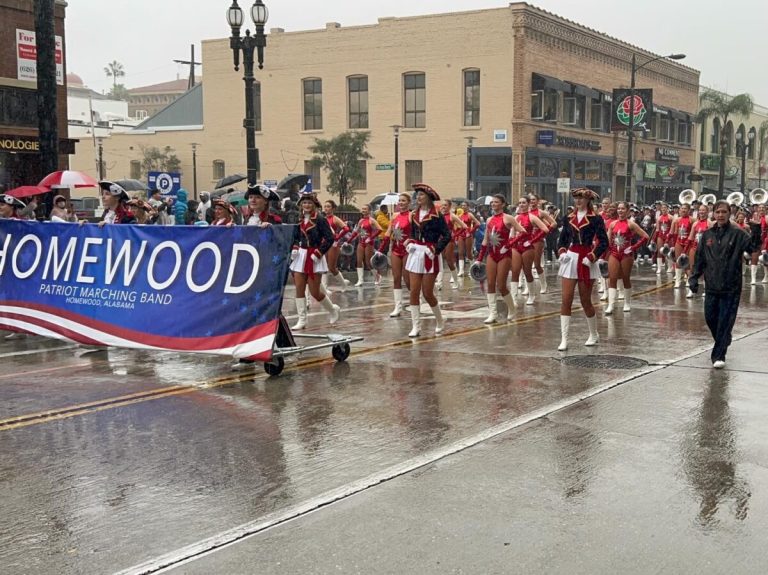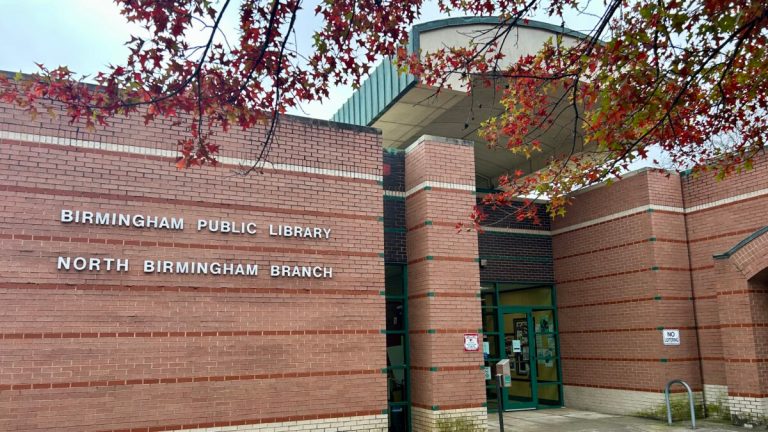12 things to know about local honey in Birmingham, including what to do about a swarm
Reading time: 7 minutes

When I think of local honey, I get a warm and fuzzy feeling. There’s something about knowing that people near here, some who I know, have been tending to bees and producing honey to make our lives a little sweeter. Once I started digging a little deeper into the world of local honey, it got more and more interesting. Here is some of what I learned.
1. Local honey is good for your health

The basic argument goes something like this: a teaspoonful of local honey a day for about a year can help the body build up tolerance for pollen that otherwise would cause awful allergies. Once you hopefully get through the next pollen season with fewer problems, keep on having your daily dose.
2. Local here means North-Central Alabama

According to local honey producer Dave Ellis, who’s been selling at Pepper Place Market since it started in 2000, “once you get down to Montgomery or up to Huntsville, you start getting different types of plants. If you go east or west to the state line, you find the same types of plants.”
He said sometimes people want to draw a line 10 or 30 miles from their house in order to consider something local, and that’s not necessary because of where the same types of plants grow.
3. Look for raw Alabama honey

According to local honey producer Danielle Dowell, “if you want local honey for the health benefits, look for raw Alabama honey. Filtered is fine, since it removes pieces of wax and other things that get into the honey. With raw honey, you get the pollen and a bunch of other antifungal agents.”
4. Once you start looking, you’ll find local honey everywhere

You can find local honey at u-pick farms and farmers markets (definitely at Bessemer and Pepper Place Markets). You’ll find it at unlikely places like Seasick Records or some Ace Hardware stores. You’ll find it for sale at places like Church Street Coffee and Books.
Then, once you’ve got your local honey antennae on, you’ll start realizing they’re using it at lots of your favorite restaurants, including Big Bad Breakfast, Bettola, Highlands Bar and Grill, Bottega, and OvenBird.

Lest you think honey’s just for food, you can also find it in favorite drinks, including Back Forty Beer Company‘s Truckstop Honey Beer, and this honey cocktail from Bettola. Not just for hot tea anymore . . .
You’ll also find local honey at various grocery stores and festivals.
5. Here are just a few of the local honeys you can try

This list is by no means comprehensive. Feel free to let us know your favorites in the comments!
- Eastaboga Bee Company—find them at Pepper Place and online
- Ellis Apiaries—find owner Dave Ellis at Pepper Place
- Hewett’s Honey—a range of honey-based products available online
- Honey & Me Apiary—look for their beeswax candles in Homewood, and honey at various locations
- Foxhound Bee Company—while they mainly specialize in helping set up other beekeepers for success with equipment and classes for sale, they also produce honey in Hoover
- We Three Beeks—you can find them at Church Street Coffee and Books, Seasick Records, and other places around town
6. Even if loads more people started producing local honey, it wouldn’t match demand

Here in the US, we consume way more honey than US-based producers can make. Because of this, the local beekeeping community is very friendly and welcoming to people who’d like to join, according to Danielle Dowell.
7. If you want to get a sneak peek into the world of beekeeping, check out We Three Beeks
The reason to follow them is that they’re honey producers and documentarians. Their blog is amazing, and they do a nice job of telling the story about what goes into taking care of bees.
8. If you think you’re interested in beekeeping, start with a little self-study

Danielle Dowell recommends checking out books like Beekeeping for Dummies or videos on YouTube to see if it’s something you’re really interested in. She does caution that it’s way more involved than anyone thinks when they get started.
9. County Beekeepers Associations have meetings, classes and more

Both the Jefferson County Beekeepers’ Association and the Shelby County Beekeepers Association have good resources for people who want to learn how to keep bees and produce honey. Look for monthly meetings and annual classes. Going to these events is a great way to get to know experienced beekeepers.
10. There are lots of beekeeping classes for people who want to become honey producers
- Check out the beekeeping classes Jefferson County Beekeepers Association has to offer.
- Adam and Stephanie Hickman with the Foxhound Bee Co. teach classes as well. Follow them to find out what classes they’re offering when: Instagram, Twitter and Facebook.
11. Don’t spray a swarm–call a beekeeper to remove it

If you find a swarm, visit the Jefferson County Beekeepers Association swarm removal page, call someone and get them out to remove it. Don’t spray. We need all the honeybees we can get.
12. Check out artist September Reed’s “The Pollinators” exhibit at the Vestavia Library throughout the month of June

Henna artist September Reed has an art show called “The Pollinators” at the Vestavia Library that’s up throughout the month of June. You can find it by the children’s department during library hours.
Here’s what the artist had to say about her show:
It’s mixed media with acrylic, acrylic enamel, and resin layers dripping off some of the canvases. The pieces range in size from 12x12s to a centerpiece that is 4 feet wide. All of the work is Freehanded and done in the style of my mehndi body art training. I’ve been a pro henna artist for about 5 years now and turned my attention to canvases only last February. The prices of the pieces range from $60-$300, with the centerpiece going for $5,000, with 20% of each painting going to support a local bee colony (as yet to be determined).
As you can see, there’s way more to local honey than first meets the eye. Raw local honey can provide health benefits. You can find it in so many places throughout the area. There’s a vibrant and welcoming community of beekeepers with plenty of opportunities to learn. Beekeepers can also help with swarm removal. And, there’s a local art show that celebrates the pollinators that help make our world bloom.
Now we want to hear from you: what’s your favorite local honey or honey-based product? Tag us in the comments!



